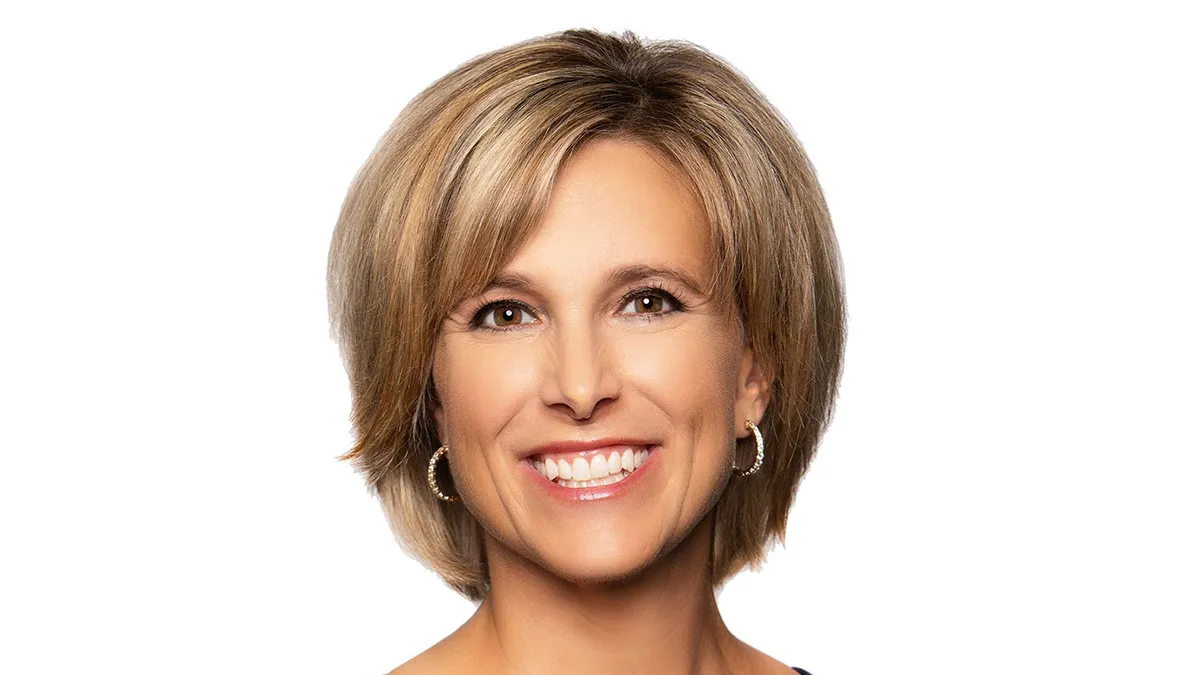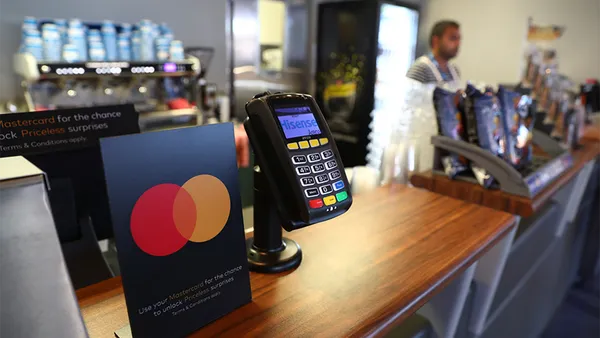Dive Brief:
- Credit card balances have soared due to robust purchasing and inflated prices for goods in recent months, and debt burdens and delinquencies are rising more rapidly for younger and less wealthy borrowers, the Federal Reserve Bank of New York highlighted this week.
- From the second quarter to the third quarter, Americans’ credit card balances climbed 15%, or $38 billion, New York Fed researchers wrote in a Tuesday post. That’s the largest increase in more than two decades, and it contributed significantly to total household debt hitting $16.51 trillion, the New York Fed said.
- “The real test, of course, will be to follow whether these borrowers will be able to continue to make the payments on their credit cards,” researchers wrote.
Dive Insight:
Delinquency rates have started to rise from the low point they reached during the COVID-19 pandemic, but New York Fed researchers are planning to keep an eye on the rates in the months ahead: “Is this simply a reversion to earlier levels, with forbearances ending and stimulus savings drying up, or is this a sign of trouble ahead?”
Consumers’ expectations of both inflation and unemployment were both up in the New York Fed’s latest Survey of Consumer Expectations released Monday.
After credit card balances contracted earlier in the pandemic, balances have increased rapidly during the first three quarters of the year, the New York Fed said. About 191 million Americans have at least one credit card account. Half of all U.S. adults have at least two cards; 13% have five or more.
Although overall, “the aggregate patterns of credit card balances are well shared by different age groups,” the New York Fed determined younger borrowers have higher balances than they did pre-pandemic, while older borrowers have lower balances.
Balances have risen for borrowers between 60 and 79, but they are still below what they were in the fourth quarter of 2019. Balances for borrowers between 30 and 59 have increased and are approaching the level they were at in the fourth quarter of 2019. And borrowers under 30 now have balances above pre-pandemic levels.
Balances dipped across borrower income levels, with the sharpest drop observed among highest-income levels. The New York Fed noted it didn’t consider income directly, but rather used borrowers’ zip codes to sort them into equal-population income quartiles.
Their average balances were $200 lower in September 2022 than they were in December 2019, the New York Fed said. Borrowers at the lowest income levels saw a more modest drop in average balances, and their balances have surpassed the average from December 2019.
Indeed, amid recession concerns, cardholders’ ability to make payments is being tracked across the industry as card issuers report delinquency and charge-off figures. Charge-offs and delinquencies resemble “normalization over true stress, in our view,” analysts with the financial firm William Blair wrote in a Wednesday note to clients.
Discover Financial Services’ delinquency rate was 2.23% for October, the company reported Monday in a filing with the Securities and Exchange Commission. That’s up from 2.11% in September and 1.96% in August. Its charge-off rate was 2.10% for October, compared to 2.01% for September and 1.86% for August.
American Express said Tuesday its consumer cards delinquency rate was 0.9% for October, the same rate it reported in September, per an SEC filing. That figure was 0.8% in August. The company’s write-off rate was 0.9% in October, up from 0.8% in September and August.
Discover’s customer base typically includes more cardholders that carry a balance month to month, while American Express caters to premium-oriented consumers with its fee-based products.
“Payment rates continued to bend down in October with rising [net charge-off] rates,” Oppenheimer & Co. analyst Dominick Gabriele wrote in a Wednesday note to clients. “We think we are starting to see pressure on the subprime consumer in numbers, likely a catch up of pandemic outperformance.
More card companies have been cutting employees, and Discover, Amex and Synchrony all disclosed during the most recent quarterly earnings reports that they’ve added to their credit loss provisions amid an uncertain economic environment.













